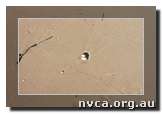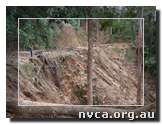What is Climate Change?
Climate change or ‘global warming’ is the most serious environmental problem facing the world this century. It has wide reaching implications, posing a threat to biodiversity, water supply, human health and the global economy.
There is now broad scientific consensus that the planet is warming and that this is due to an unprecedented increase in the concentrations of greenhouse gases in the atmosphere, primarily from human activities such as the burning of fossil fuels.
The average global temperature increased by 0.740C in the 100 years to 2005. This small temperature increase has already changed the global climate with effects including the melting of sea ice, permafrost and glaciers; rising sea levels; reduced rainfall; bleaching of coral reefs; and more frequent extreme weather events, such as drought, cyclones, heatwaves and bushfires. Global greenhouse gas emissions increased by more than 70% over the last 40 years.
Immediate and concerted action on the part of governments, businesses and communities to stabilise atmospheric greenhouse gas concentrations is needed to avoid further climate change.
What is causing climate change?
The greenhouse effect is a natural phenomenon that keeps the surface temperature of the Earth at a liveable temperature. The Sun’s radiation passes through the atmosphere as light waves, warming the earth’s surface. This energy is then re-radiated in the form of infrared waves. Most of this infrared radiation continues to outer space but some is absorbed by greenhouse gases, such as carbon dioxide, water vapour and methane, in the atmosphere. This absorption of energy allows the average temperature on earth to be maintained at a comfortable 150C, rather than -180C which would occur without natural concentrations of greenhouse gases.
Human activities since the industrial revolution have dramatically increased the concentrations of greenhouse gases in the atmosphere. These activities include the burning of fossil fuels for electricity production and transport and land clearing.
The increased concentrations have raised the level of absorption of the infrared radiation and thus increased the temperature on earth.
- Source: UNFCCC
What can we do about climate change?
Did you know that the average Australian house generates about 14 tonnes of greenhouse gas each year? Picture this - one tonne of greenhouse gas would fill an average home!
Please consider the following actions to reduce your personal GGEs
- Change to energy efficient light bulbs
- Switch off lights when you leave the room
- Change to water efficient showerheads
- Set your washing machine to cold wash
- Insulate your electric hot water heater and pipes
- Take shorter showers
- Fix dripping taps
- Install a solar hot water system
- If you aren't going far, ride a bike or walk instead of taking the car
- Buy locally grown and preferably organic foods
- Ensure your tyres are pumped to the recommended pressure
- Switch to GreenPower
- Install solar panels on your roof
- Set your fridge at the right temperature (3-5 degrees C)
- Only heat or cool the room you are in
- Don't over-cool or over-heat your house
- Switch off any heaters or air conditioners when you leave the house
- Seal any draughts around your doors and windows
- Improve the insulation in your home to cut your heating and cooling
- Plant local native tree species appropriate to the site
Find a climate action group near you at http://www.climatemovement.org.au/groups
NVCA members undertake tree planting of local native species at various rehabilitation sites as a means off offsetting carbon emissions created in the course of pursuing NVCA objectives.
For an update on the next planting day contact nvca@nvca.org.au |





